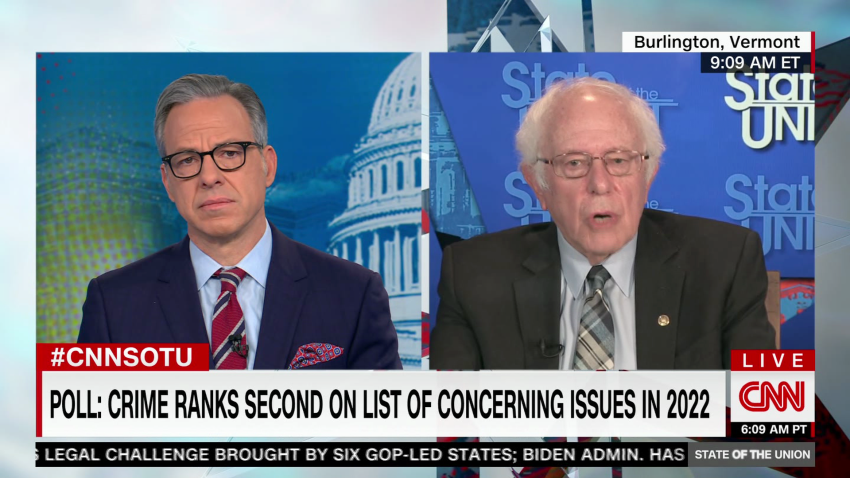
Opinion: Who is ‘Dark Brandon?’


‘I am worried’: Hear Bernie Sanders’ warning on 2022 turnout
08:09 – Source: CNN
Editor’s Note: Kristen Soltis Anderson, a CNN Political commentator, is a Republican strategist and pollster and author of “The Selfie Vote: Where Millennials Are Leading America (and How Republicans Can Keep Up.)” The views expressed in this commentary are her own. Read more opinion articles on CNN.
CNN —
Democrats have sensed that younger voters might stay home in November and have turned to “Dark Brandon” for help in times of trouble.
For those who do not know – and my own polling suggests that is most everyone reading this – “Dark Brandon” is a meme of President Joe Biden, rendered as an all-powerful hero (or villain, depending on your perspective). It started as a right-wing catchphrase before Democrats appropriated it to praise the President.
The meme reached the height of its powers, whatever those may be, when the Democratic group Building Back Together released a hallucinogenic 30-second ad earlier this month featuring the meme of President Biden, lasers coming out of his eyes and all. The message? Biden is an exciting and successful hero on issues like student loan debt. Or rather, “if you’re unenthused about Biden and the Democratic Party, please don’t be.”
I’ve sounded the alarm for years that Republicans are in trouble with younger voters and are in danger of losing them for good. This remains the case, as many polls show younger voters still have quite negative views of the GOP.
But even though Millennials and Gen Z Americans tend to lean leftward on a host of economic and cultural issues such as LGBTQ rights and the size of government, it is clear that in this midterm election, Democrats have not energized the youth vote and may not be able to count on young people as a key part of their coalition.
Voters under 30 are not exactly enamored with how things are going in America these days. Two-thirds of them say that the economy is bad, according to CBS News/YouGov polling. And accordingly, less than a quarter “strongly approve” of the job Biden is doing. Only 31% say they are “very enthusiastic” about voting in the midterms, compared to two-thirds of voters 65 and older. And only one in six say they are paying a “great deal” of attention to the midterms.
This isn’t terribly unusual. Younger voters usually drop off in larger numbers than older voters when you go from a big presidential election to a lower-key midterm. According to CNN’s exit polls, voters under 30 only made up 13% of all voters in the 2018 midterms, compared to 17% in the 2020 general election.
However, my own firm’s analysis suggests that voters under the age of 30 could fall to only 10% of the electorate in 2022 –a year where we expect overall turnout to be historic for a midterm at over 125 million votes.
While young voters aren’t likely to turn out in huge numbers to power a “red wave,” it isn’t hard to imagine them costing Democrats their majorities by staying home.
Democrats didn’t always need younger voters to win. In fact, younger voters were a relatively evenly split voter group for much of the 1990s and 2000s. But in the 2006 midterm, before then-Sen. Barack Obama (D-IL) had even announced his bid for the presidency, young voters began bleeding away from the GOP in big numbers. Exit polls showed voters under the age of 30 breaking for Democrats by a 22-point margin in House races in that election, which swept Nancy Pelosi into the speakership for the first time.
Young voters continued to oppose the GOP even in “red wave” years. The 2010 election, by all accounts a great year for Republicans, saw voters under age 30 still break for Democrats by a 16-point margin. By the time the “blue wave” of 2018 came along, we were seeing blockbuster turnout among young voters in elections that they previously sat out. Additionally, those voters broke for Democrats by an absolutely enormous 35-point margin.
But then Donald Trump lost the presidency and Biden – not necessarily a favorite among younger voters – became the leader of the nation and the Democratic Party. Even before he was the Democratic presidential nominee, his polling among young voters always left something to be desired; only one third of voters under 30 held a favorable view of him before the 2020 election.
Issues of importance to many young voters have taken a backseat and our political class continues to age. As a result, in the last few years, there has been a fascinating depolarization along generational lines. Previously, if I knew your age, I could somewhat easily make an educated guess about how you’d vote. That is less likely to be the case today, largely because young voters have become more disillusioned with Democrats.
What is especially troublesome for Democrats is that this is all happening against a backdrop of young Americans being increasingly vocal about their politics. Companies are grappling with Gen Z and Millennial employees who seem keener than ever to work for employers that align with their political and cultural worldview. I regularly hear from business leaders who know that younger consumers are voting with their wallets and opting for products and services that match their values.
If younger Americans are increasingly focused on issues and wanting change, but they aren’t turning out to vote in midterms, that represents a huge missed opportunity for those who want to see greater youth participation in politics. And in this election, it could cost Democrats their majorities.
Source: https://www.cnn.com/2022/10/29/opinions/democrats-young-voters-midterms-anderson/index.html


















